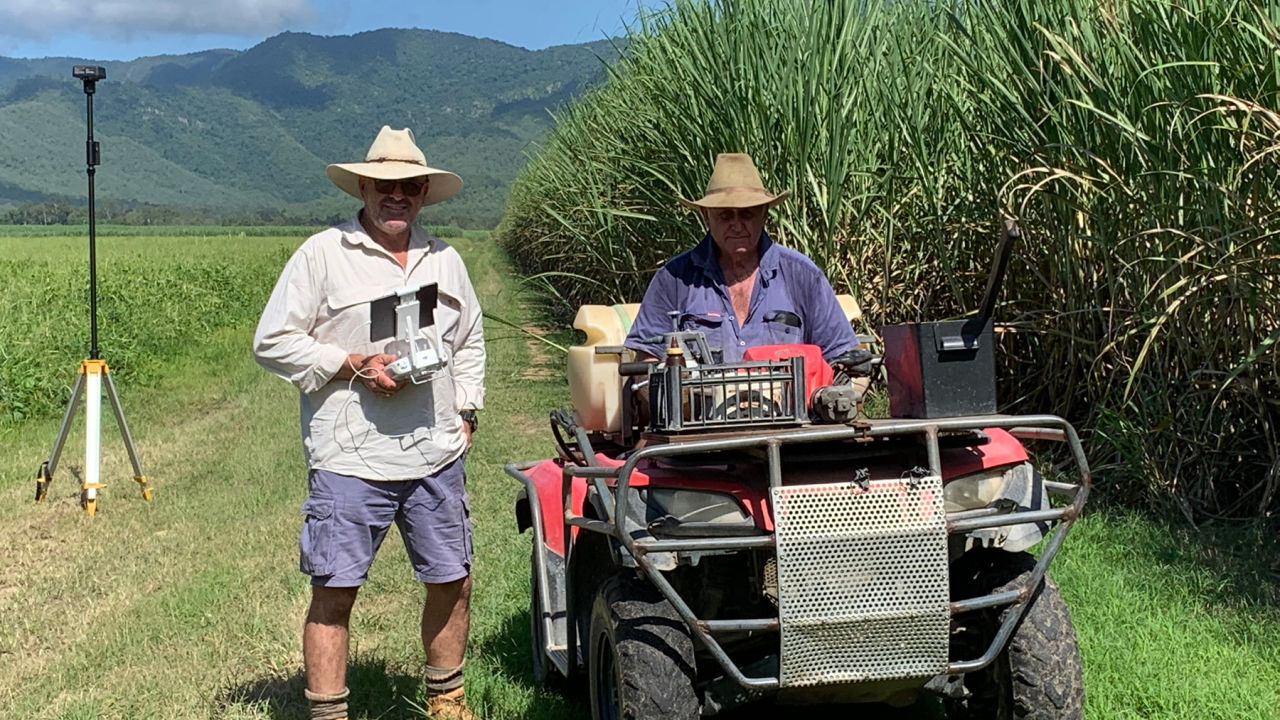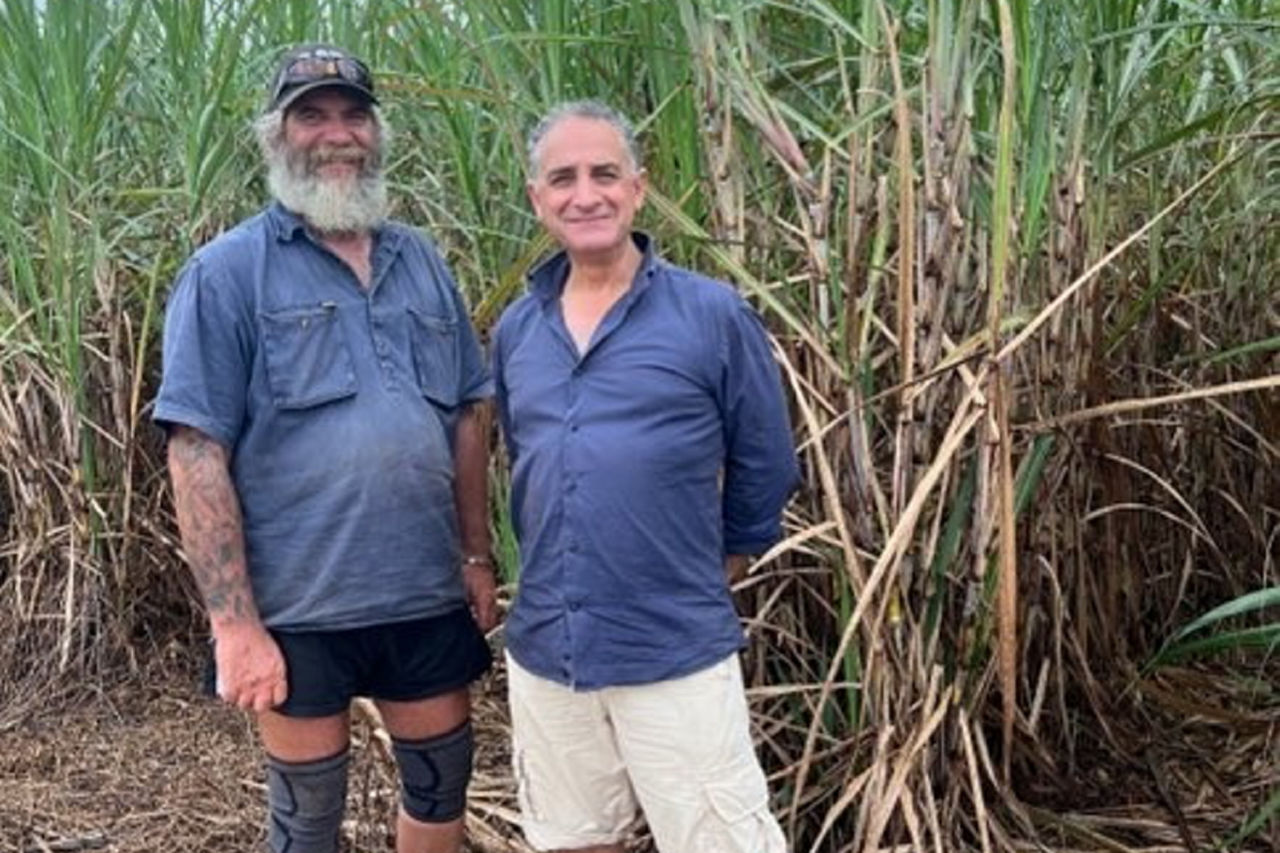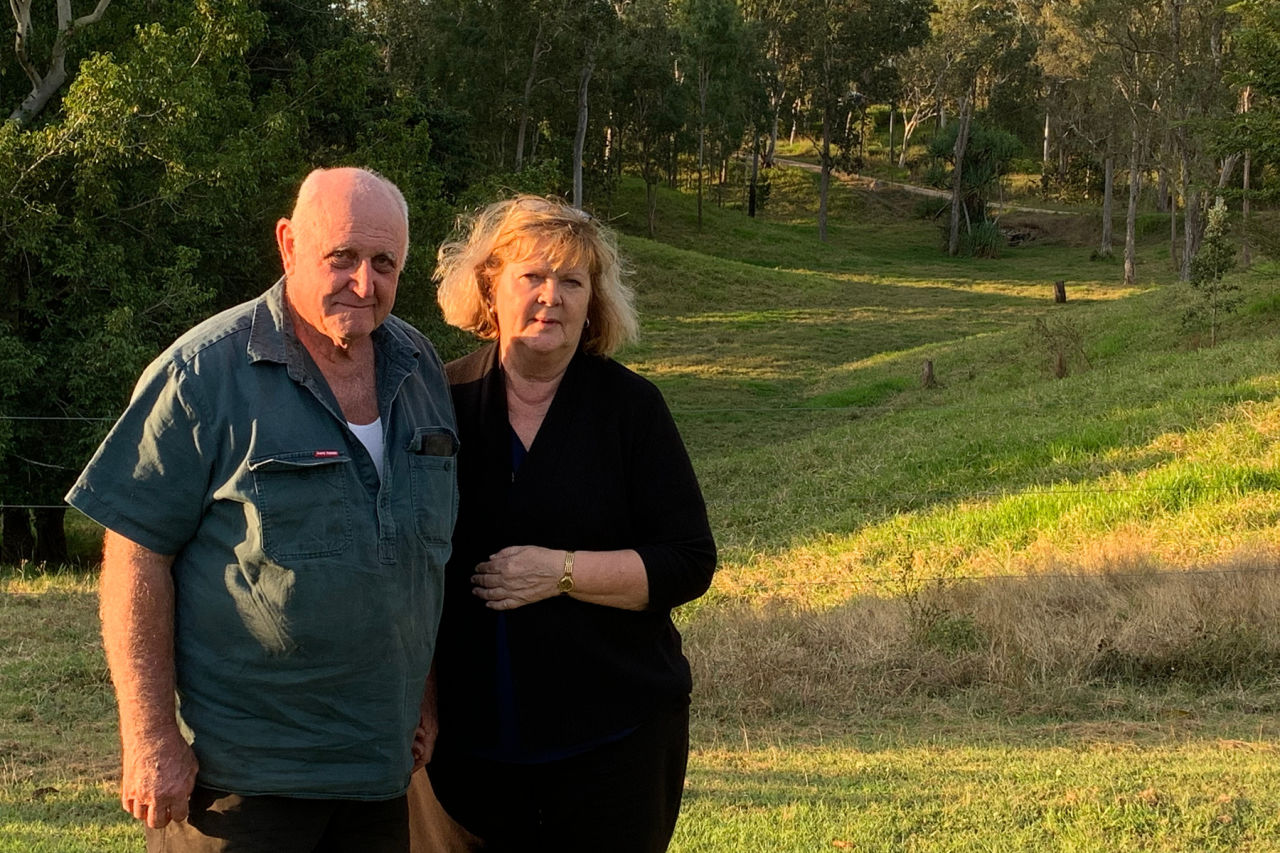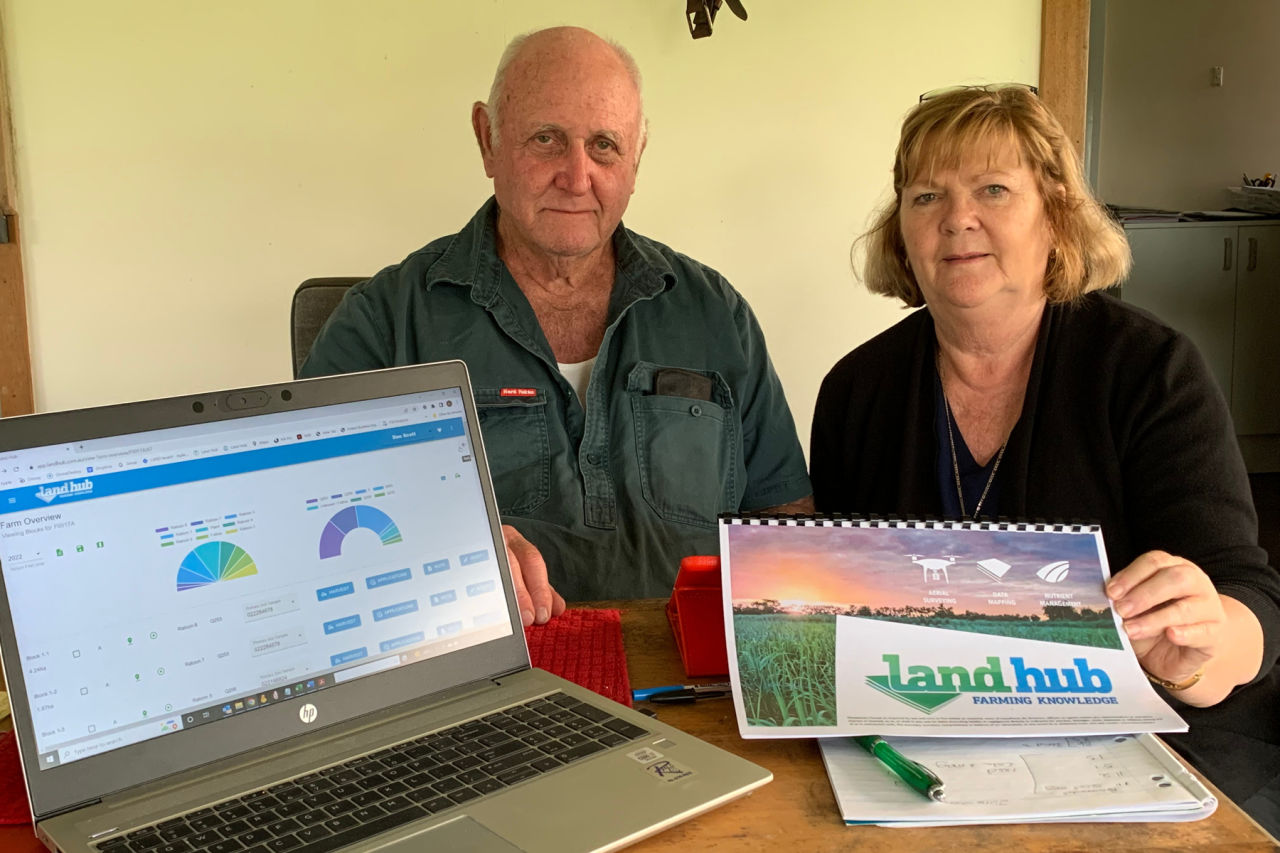Project News ·
LANDhub project helps farmers better manage their soil nutrients
Cane farmers across Great Barrier Reef catchments are using smart data, technology and management strategies to improve environmental outcomes, increase the sustainability of their farms and reduce nutrient runoff for a healthy Reef.

Nitrogen is an essential plant nutrient and an effective fertiliser, but increased concentrations in water can cause negative effects on the environment. Across the globe, the movement of dissolved inorganic nitrogen (DIN) from fertilised agricultural lands into rivers and catchments has been identified as a major water quality issue.
Nutrient degradation of coral reefs is a global problem, with its effects observed across reefs in the Great Barrier Reef, the Caribbean and Hawai'i. Although coral reefs are among the most productive ecosystems on the planet, they thrive in nutrient-poor environments.
Nutrient enrichment can negatively affect coral physiology and ecosystem functioning. It increases crown-of-thorns starfish outbreaks, the susceptibility of coral to bleaching and diseases, and the spread of algal blooms. This all leads to lower coral diversity and reef health.
Funding through the partnership between the Australian Government’s Reef Trust and the Great Barrier Reef Foundation is providing agronomic and technological support to better match nutrient application to crop requirements and reduce losses through runoff entering the Great Barrier Reef Lagoon.
The partnership-funded LiquaForce LANDhub project supports farmers in the Tully-Johnstone, Lower Herbert, and Mackay-Whitsunday regions. This project is using agronomic expertise and technology to close the knowledge gap for sustainable farm management and enable accurate cause-and-effect analysis of farm fertiliser decision making.

Rob Donato and family. Rob is committed to getting his children involved in agriculture and has been taking them on the practice change journey wherever possible. Credit: Liquaforce.
In the Tully, Melbourne-based Medical Doctor Rob Donato manages his 89-hectare farm remotely with day-to-day operations supported by local sugarcane farmer Russel Maifredi. Rob joined the LAND project for the benefits of digital farm data management, new data insights through drone footage of the farm, Electromagnetic Mapping, and soil testing to transition to precision agriculture and accurately apply fertiliser at rates according to the variable needs of his soils.
Both Rob and Russell were involved in the design of the key requirements for the farmer LAND app, helping to define the priority functionality for in-field use. The feedback from both farmers was “we were very happy with the final version of LAND app and are excited about what it would do for us now that it is up and running.”
Rob is committed to getting his children involved in agriculture and has been taking them on the practice change journey wherever possible. He focused on environmentally friendly practices and is impressed with the project outcomes on his farm.

Russel Maifredi and Rob Donato farm sugarcane in the Tully region. Credit: Liquaforce.
In the Mackay Whitsunday region, Bryce Jackson and his family run a combined operation across six sugar properties. Together with their suppliers and the LANDHub project, the Jacksons have embarked on a program of regular soil sampling, coupled with drone aerial survey imagery to study crop health and assessment of variation in the crop stand, and Electromagnetic Mapping soil surveys.
“We want to be confident that we are compliant with the reef regulations. Despite the simplicity of the concept of regulation and the farm nutrient budget, on six farms there is a lot of calculation and cross-checking to get to a whole farm nutrient budget for each farm. As we have seen in the Reef water quality project, the LANDHub approach should be a workable way to achieve this,” said Bryce.
To improve their farming practices, the Jackson family innovated with their fertiliser application shifting from surface application of liquid BioDunder blends to sub-surface stool-split application in ratoons to reduce losses and improve nutrient use efficiency.
The Jacksons use subsoil placement fertilizer application technology, “In our country, to minimize the risk of runoff, it was a no brainer for us to try a Liquid product as a stool split application. We are keen to minimize runoff and maximize the effect of the fertilizer we apply. We are conscious of the upper limit we are allowed under the farm nutrient budget.”

Bryce Jackson collects soil samples on his farm. Credit: Liquaforce.
Don and Carmel Scott have been farming 80 hectares in the Upper Stone area of the Herbert catchment for 36 years. The farm initially ran cattle on improved pasture before introducing sugarcane in 1992 which is now the focus on the property, alongside a few head of cattle and sheep.
Don is passionate about the land he manages and is conscious of the practices he uses for environmental sustainability. “I like to keep the environment on my farm in good shape. The better decisions I can make towards that outcome are key to keeping my farm productive in the long term,” he said.
Typical to the Herbert region, the farm operates on a rainfed system with supplementary irrigation available when required. The soil types on the farm are generally sandy soils overlaying clays and numerous gullies run through the farm, which are well maintained with vegetation and are primarily heavily grassed with trees.

Don and Carmel Scott have been farming 80 hectares in the Upper Stone area of the Herbert catchment for 36 years. Credit: Liquaforce.
Through the LiquaForce LANDhub project, Don and Carmel have refined their nutrient management and developed more specific recommendations across the cane farm. Electromagnetic Mapping was used to measure soil salinity, texture and moisture condition, which has informed adjustments to fertiliser products used.
Don has moved away from using a single product across the farm. Fertiliser application is now tailored to specific management zones where each block shows its own requirements. Testing has identified missing ingredients in the soil, supporting the journey towards maximum nutrient use efficiency on the farm.
The LAND project also administers small incentive grants to support farmers in improving their practices. Don and Carmel used a small grant to obtain storage tanks to run two different products at a time and tailor applications to specific management zones. Other farmers have equipped harvesters and tractors with RTK GPS guidance ensuring consistent row spacing and placement and reducing risk of stool damage and compaction in operations for ratoon crops.
With all the information now available within the LAND platform and app, Rob and Russell, Don and Carmel, and the Jackson family have access to easy record keeping, which allows them to continue to assess and refine their farm management plan into the future. This systems-based approach will ultimately save money and reduce losses through the precision application of fertiliser: a win for farmers and the Reef.

Don and Carmel joined the LiquaForce LANDhub project in May 2021 and received assistance to refine their nutrient management and develop more specific recommendations across the cane farm. Credit: Liquaforce.
#Related

Project News ·
Community at the forefront of Reef water quality protection

Project News ·


